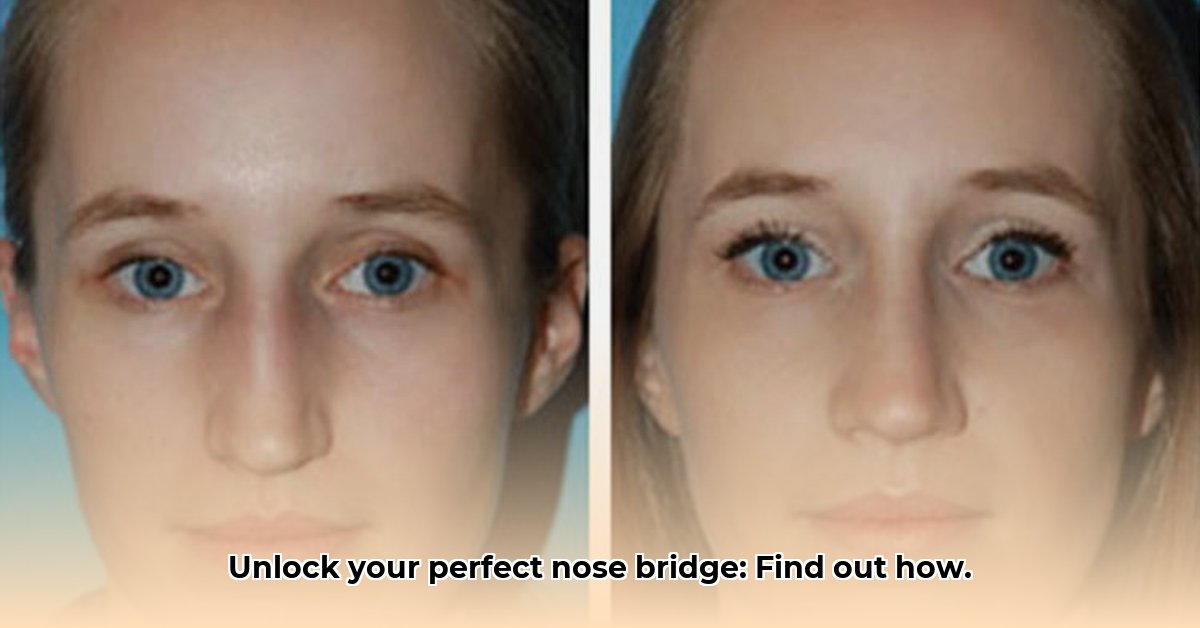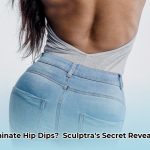Your nose bridge plays a vital role in both your appearance and the fit of your eyewear. This guide explores the intricacies of nose bridge shapes, distinguishing between high and low bridges, considering cultural perceptions, and assisting you in selecting the perfect glasses. We’ll delve into the allure of a high nose bridge and examine various reshaping options, from surgical procedures to non-invasive methods like fillers and makeup, empowering you to make informed decisions. Whether you’re in search of new glasses or contemplating a cosmetic change, this guide provides the knowledge to navigate your options effectively.
High Nose Bridge: Shape, Fit, and Reshaping Options
Let’s delve into the world of high nose bridges – those prominent features situated between your eyes. Each one is unique, molded by genetics and ethnic background. A high nose bridge typically extends noticeably above your pupils, unlike a low bridge, which presents a flatter profile closer to or below the pupil line. This variance significantly impacts facial aesthetics. Consider the intricate structure of your nasal bones and their alignment with your overall facial features! Did you know a subtle shift in bone structure can cause a dramatic impact on your facial profile?
Understanding Your Nose’s Structure: Nasal Anatomy
Your nose is a complex structure consisting of bone and cartilage. The nasal bones form the bridge, while the cartilage shapes the tip and sides. The height of your bridge is determined by the dimensions and angle of these components. Variations exist, with some individuals possessing naturally high, narrow bridges, and others exhibiting wider, lower ones. This diversity contributes to the uniqueness of each face. It’s fascinating how these subtle differences in bone structure create such diverse facial profiles.
How Culture Sees Your Nose: Aesthetic Views
Throughout history, diverse cultures have held varying perceptions of what constitutes a beautiful nose. Preferences differ significantly across societies and evolve over time. Cultural ideals regarding nose shape are deeply rooted in history and identity, influencing perceptions of attractiveness. Remember these are rooted in history and social standing.
Finding the Right Eyeglasses: Optimal Eyewear
A high nose bridge significantly impacts the fit of your eyeglasses. Ill-fitting glasses can be uncomfortable and bothersome. The bridge of your glasses must rest comfortably and securely. Individuals with high nose bridges often require extra care to find glasses that fit perfectly, preventing slippage or pinching. The size and shape of the nose pads are crucial, matching the curve and height of your nose bridge. Experimentation is key to finding the best fit, ensuring comfort and stability.
Changing Your Nose Shape: Your Options Explored
If you’re considering altering your nose bridge shape, several options are available, each with distinct advantages and disadvantages, including permanent and temporary solutions. Let’s explore them:
1. Rhinoplasty (Surgical Nose Reshaping):
- Pros: Offers a permanent solution, enabling significant changes to your nose’s shape; can address structural issues.
- Cons: Involves surgery, carrying risks such as infection, scarring, and potential breathing complications; requires recovery time and can be expensive. According to the American Society of Plastic Surgeons, the average cost of a rhinoplasty can range from $5,000 to $15,000 depending on the complexity.
2. Dermal Fillers (Non-Surgical):
- Pros: Represents a less invasive procedure with minimal recovery time; results are reversible, and it’s typically less costly than surgery.
- Cons: Provides temporary results, necessitating repeat treatments; carries a small risk of asymmetry or allergic reactions.
3. Non-Surgical Rhinoplasty:
This technique employs specialized fillers to make subtle adjustments to your nose’s shape without surgery. Results are temporary and less dramatic than with surgical rhinoplasty.
4. Makeup Contouring:
- Pros: Provides an inexpensive and temporary method to alter your nose’s appearance, easily adjustable to suit your preferences.
- Cons: Requires skill and practice to achieve desired results and does not offer a permanent solution.
5. Nose Exercises:
Limited scientific evidence supports the claim that nose exercises can reshape your nose bridge. Exercise caution and manage expectations. While some proponents suggest specific techniques, like nostril flaring and nasal massage, their effectiveness remains largely anecdotal.
Making the Best Choice for You: Informed Decisions
The optimal approach is determined by your individual desires and realistic expectations. Budget considerations play a significant role, as do your risk tolerance and desired result longevity. Consultation with a doctor or qualified professional is crucial before making any decisions, providing guidance towards the best option for your specific needs.
Nose Reshaping: A Quick Summary
This table highlights the invasiveness, cost, results, recovery time, and potential risks of different nose reshaping methods.
| Method | Invasiveness | Typical Cost | Results | Recovery Time | Potential Risks |
|---|---|---|---|---|---|
| Rhinoplasty | High | High | Permanent | Several weeks | Infection, scarring, breathing problems, asymmetry |
| Dermal Fillers | Low | Moderate | Temporary | Minimal | Allergic reactions, asymmetry, filler migration |
| Non-Surgical Rhinoplasty | Low | Moderate | Temporary | Minimal | Allergic reactions, asymmetry, filler migration |
| Makeup Contouring | None | Low | Temporary | None | Requires skill, not a long-term solution |
| Nose Exercises | None | Low | Unproven | None | No proven effectiveness; time commitment required |
Remember, informed decision-making is key. Research thoroughly and consult with a medical professional before undergoing any procedure, ensuring you receive expert advice.
How to Choose Eyeglasses for a Low Nose Bridge
Selecting the correct eyewear for a low nose bridge is crucial for comfort and style.
Key Takeaways:
- A low nose bridge necessitates specific eyewear considerations for a comfortable and secure fit.
- Frame selection is critical, taking into account bridge width, material, and adjustable nose pads.
- Lightweight frames enhance comfort and prevent slippage.
- Understanding your nose bridge characteristics is key to finding the ideal glasses.
- Professional fitting ensures optimal comfort and visual clarity.
Understanding Your Nose Bridge: Low Bridge Features
Before exploring how to choose eyeglasses for a low nose bridge, it’s essential to define what distinguishes a low nose bridge. It refers to a shorter distance between your eyes and the highest point of your nasal bridge, where glasses rest. As a result of this gap being less than average, glasses are more prone to slippage. Constantly pushing your glasses up? That is a common complaint.
The Importance of Frame Selection: Finding the Perfect Match
The key is finding a balance between style and function, ensuring comfort and preventing slippage.
- Bridge Width: A narrower bridge width is generally more suitable for a low nose bridge, preventing discomfort and slippage. Look for frames with a bridge width of 15mm or less.
- Frame Weight: Lightweight frames are preferable, reducing pressure on the low bridge and minimizing slippage. Opt for frames made of titanium or acetate.
- Nose Pads: Adjustable nose pads are crucial, allowing customization for a comfortable and secure fit. Silicone nose pads are also a great option as they tend to grip better.
- Frame Material: Lighter materials such as titanium are usually better than heavy plastics.
Finding the Right Fit: A Step-by-Step Guide
- Measure Your Nose Bridge: Measure the width of your nose bridge using a ruler. Alternatively, many optical shops offer free measurements.
- Consider Frame Styles: Opt for frames with narrower bridge widths relative to your measurement.
- Prioritize Adjustable Nose Pads: Ensure your chosen frame features adjustable nose pads for customized comfort.
- Try Them On: Try on numerous frames, assessing weight, adjusting nose pads, and moving your head to ensure comfort and a secure fit.
- Seek Professional Assistance: Consult an optician for expert guidance in finding the perfect fit.
Beyond the Basics: Addressing Specific Needs
Looking for more specialized solutions?
- “Asian Fit” Frames: Specifically designed for individuals with flatter nasal bridges, offering a narrower bridge fit and lighter construction. These frames often feature increased curvature at the temples to prevent sliding.
- Custom Frames: Consider custom-made frames for bespoke fitting solutions tailored to unique facial features. Several online retailers now offer custom frame options.
High Nose Bridge & Eyewear Frame Selection Guide: A Comprehensive Look at Fit and Style
Selecting the right eyewear for a high nose bridge ensures both comfort and style.
Key Takeaways:
- Understanding your nose bridge’s shape and size is crucial for comfortable and stylish eyewear.
- Adjustable nose pads are essential for a perfect fit, allowing for customization.
- Frame width and bridge placement significantly impact comfort and appearance, influencing overall aesthetics.
- Cosmetic procedures can modify nose bridge shape, necessitating thorough research and professional consultation.
Understanding Your High Nose Bridge: Key Considerations
A high nose bridge, a prominent feature between your eyes, influences how eyewear fits and looks, presenting unique considerations for frame selection. How does this affect eyeglasses?
How Nose Bridge Height Impacts Eyewear Fit: Frame Dynamics
A high nose bridge affects how glasses rest on your face. Standard frames may sit too low, pinching or sliding down. The right frame can make all the difference. Here’s what to consider:
- Frame Size: Larger frames generally provide
- Doctor Work Life Balance: Proven Strategies for Physician Well-being - November 20, 2025
- Find Your Work-Life Harmony: Quotes for a Fulfilling Life - November 18, 2025
- CRNA Work-Life Balance: Strategies for a Healthier Lifestyle - November 16, 2025
















